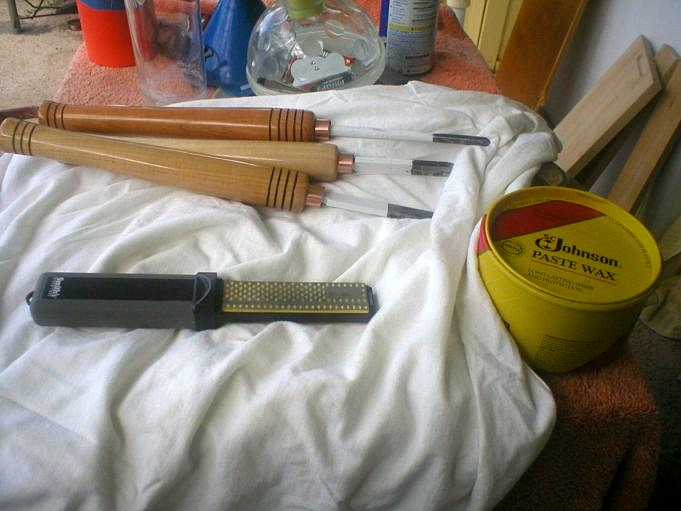How Do You Sharpen Lathe Tools? – Keep Your Woodworking Essentials In Tiptop Shape
Share it
LinkedIn WhatsApp
Although you have spent a lot of money on lathe tools, they are not as sharp. Bluntness can not only impact the quality of your work but also cause serious injuries.
Our experts can show you how to keep your tools in tip top shape.
How To Sharpen Lathe Tools
To perform multiple operations on a lathe, a lathe tool rotates around an axis. These operations include cutting and knurling as well as sanding, drilling, turning, and sanding.
A piece of woodturning at high speeds is the fastest way to dull a tool. This makes sharpening an essential process. It can do all the work and not just the bits, thanks to the lathe tool design.
To keep the edges from becoming dull and rounded, it is important to sharpen the bits regularly. Once you are comfortable with the process, it is easy to turn wood.
The Reason Your Lathe Tool’s Sharpness Has Declined
Woodturning presents a major challenge in terms of tool wear and tear. This makes it crucial to sharpen your tools. Your tools’ edge can rust if they are made of carbon steel.
Sharpening your tools can also be affected by scratches and dents. Your turning tools can become duller if they are stored in poor environments or in places such as a humid environment or in a cluster inside a box.
Your skew chisel’s spindle and bowl gouges will become blunt over time. This is due to the wood being turned. Your implement will be affected more by hardwood than softwood. The cutting edge of your lathe tool will chip away if it keeps dropping out of your hands. A decline in sharpness can be caused by misusing your lathe tool or using it for other purposes.
How To Sharpen Lathe Tools
If you are familiar with the steps to follow and what accessories to keep handy, your lathe tool will be easier to taper. Our experts will teach you how to properly sharpen lathe tools for metal, wood, and glass.
1. Make sure you have the right tools and protective equipment.
You need to prepare your tools before you begin the process of sharpening. It is not a good idea to return to the grinder multiple times. You will need the following tools:
- Grinding wheel: A grinding wheel is essential for tool sharpening. You can choose from a 6- or 20-cm antique stone grinder, or a modern bench grinder to taper your tools. For shaping your tools, a grinder is also useful. Many people confuse sharpening with shaping. People often confuse shaping with sharpening.
- Grinding jig: The jig is a tool-specific guide that can be used with your tools bits. They are held in place at the right angle to the grinding wheels. To set up a Jig, you need to measure accurately. A set-up jig can be used once and provides a guideline for quick sharpening.
- Eye protection: To prevent sparks and fillings from reaching your eyes, you will need to use either an eye shield or eye goggles.
- Rubber gloves: These gloves are essential for sharpening lathe chisels and spindles. They are also useful in woodturning as they protect your hands against any grazing. They absorb vibrations from the lathe machine.
- Wheel dresser: It is necessary to maintain a grinding wheel. The multi-diamond T bar works well for this purpose.
- Protection for the ear
- Loose clothes
- Sharpening the lathe tool
- A dry cloth and a container of water
2. Check Sharpness
There are many ways to determine if your turning tools need sharpening.
- Thumb Test: Run your thumb along the edge of a sharpened tool and feel for a bur. You should not rub your finger on the sharpened edge of a tool as this could cause injury.
- End grain testing: Take a piece softwood, such as cedar, and clamp it on your workbench to test the sharpness and sturdiness of your skew or gouge. If the gouge cuts through shavings on the corner of the end grain, it is sharp. The tool will not be blunted if it cuts out shavings.
- Light Test: Place your chisels or gouges in bright light. They will reflect light if they do not reflect it. If they do, they will be sharp.
- The paper test: This is a test that’s more useful for skews and not bowl gouges. A piece of paper should be held at the edge. The tool won’t become dull if it is straight and clean. If the paper is not straight, it’s worth sharpening.



